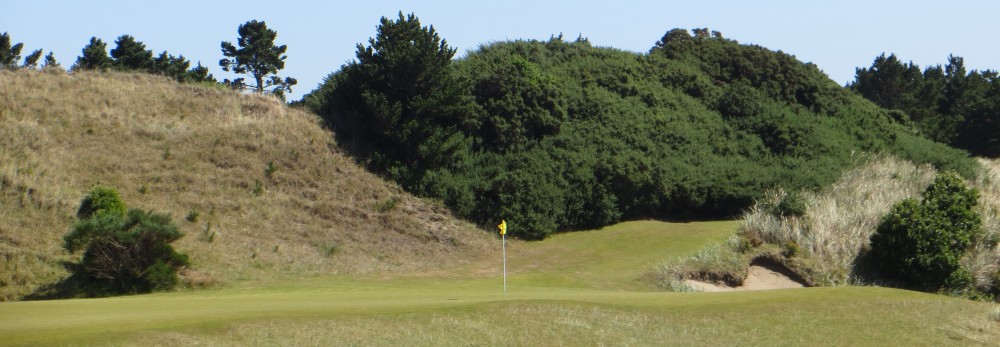 The Southwest corner of Ireland is one of the most temperate places on the island since it is saddled by the gulf stream and as a result this area attracted the attention of an array of interlopers over the centuries. The British introduced golf to this area as early as 1889 under the aegis of the Waterville Athletic Club in the form of a crude 9 hole golf course. But the area did not prosper into a real golf destination until the 1960s when an Irish born American named John Mulcahy decided to introduce the most testing golf links in Ireland to the Ring of Kerry. He teamed with Eddie Hackett, the most accomplished links designer of his time, and Claude Harmon, a past Masters Champion and head professional at Winged Foot in the United States.
The Southwest corner of Ireland is one of the most temperate places on the island since it is saddled by the gulf stream and as a result this area attracted the attention of an array of interlopers over the centuries. The British introduced golf to this area as early as 1889 under the aegis of the Waterville Athletic Club in the form of a crude 9 hole golf course. But the area did not prosper into a real golf destination until the 1960s when an Irish born American named John Mulcahy decided to introduce the most testing golf links in Ireland to the Ring of Kerry. He teamed with Eddie Hackett, the most accomplished links designer of his time, and Claude Harmon, a past Masters Champion and head professional at Winged Foot in the United States.
The front nine was reconfigured and expanded to create the current outward half and inward nine was built on the more exposed and rugged ground which gives this links it’s unique character.
The course flourished under Mulcahy’s direction over the next fifteen years as well as the influence of their long driving professional Liam Higgins. The sixteenth is named Liam’s Ace for the distinction of him having made a hole-in-one on this testing par 4. The seventeenth is called Mulcahy’s Peak for the back tee on this panoramic par three gives one the sensation of being on top of the world.
Over the years great champions like O’Meara, Woods, Stewart, and Els have played this course in preparation for the Open Championship. Payne Stewart in particular took interest in the place and was named Captaincy of Waterville just before his tragic death in 1999. The life size bronze statue of him stands behind ninth green as testimony to the special bond created with Waterville.
 In 2003-04 the club commissioned Tom Fazio to do some major changes to the course. The major change was replacing 6 and 7 with two new, far more interesting and challenging holes. A number of greens were re-sited-including 16-Liams Ace-and new dunes and shell bunkers were woven into existing landscape to make a number of the holes more tactical and interesting to the eye. Actually looks quite original and makes the course that much better.
In 2003-04 the club commissioned Tom Fazio to do some major changes to the course. The major change was replacing 6 and 7 with two new, far more interesting and challenging holes. A number of greens were re-sited-including 16-Liams Ace-and new dunes and shell bunkers were woven into existing landscape to make a number of the holes more tactical and interesting to the eye. Actually looks quite original and makes the course that much better.
This is one of the windiest golf courses you will play in Ireland but the weather is usually temperate so the conditions are always tolerable. Because of the temperate climate you actually will see a few Palmetto trees adorn the course-it seems like an aberration but the warm gulf stream wind is part of the weather patterns. But weather aside this is one of the most challenging links courses in the country. It has everything you want in a links layout-serpentine holes wending through tall, intimidating dunes. Severe fall offs in the green complexes and large, swift, undulating putting surfaces that will challenge your mind. I do not think you can appreciate the severity of the terrain until you get into the more rugged ground on the back nine. But the walk down the fairway of the par five 11th-called Tranquility-will make it very evident to you how sublime and intimidating this course can be.
Don’t miss the memorabilia on the walls of the clubhouse or the bronze putting figure of Old Master next to the practice green. It all part of the pure links ambiance of this wonderful destination.
–
Architect: Eddie Hackett (1973) (renovations by Tom Fazio 2004)
Tees Par Yardage Rating Slope
Middle 72 6781 72 139
(Click to see complete Waterville Golf Links hole-by-hole descriptions)












